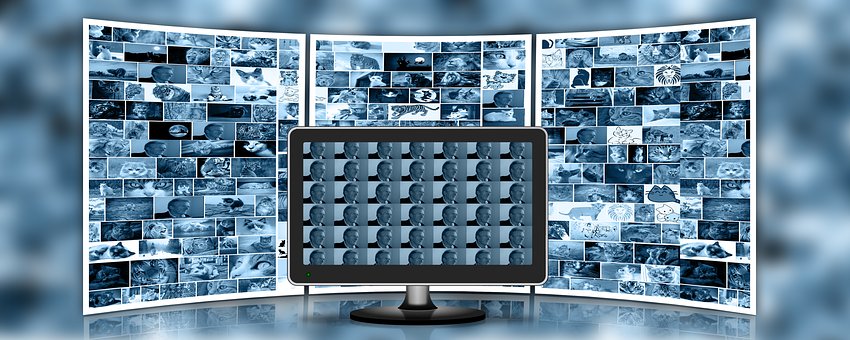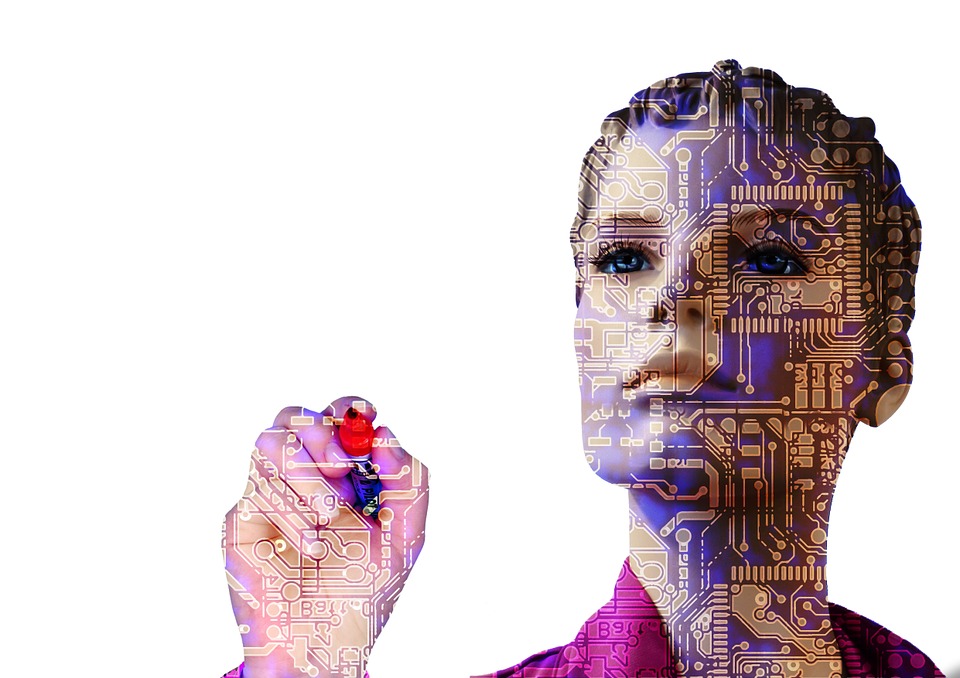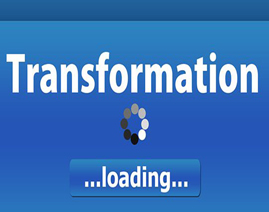CIO Business leadership - shifting from tech to business leadership
CIOs are no longer technocrats, they are business enablers and crucial part of organisation. CIOs should be ready to take risks, and must have extensive planning and strategy for the business they are working for to be the part of the business.
The CIO role in my organisation is as important as any key business role. Being into a dynamic business, and in a time of disruption, the CIO has to lead the business transformation in the digital era — that’s the target we have set for the organisation. Our group consists of many entities which are online businesses, and most of them are global businesses. Transformation to the so called 3rd layer (SMAC stack) is very much required to get more users, increase the experience of end users and retain them. This will lead to revenue growth and SMAC plays an extremely important role in this. As a CIO, I have taken all steps to adapt new technologies to provide the required agility to business and have succeeded in this aspect. Be in Cloud, Mobility, Social or Analytics, we have adapted all technologies and got our business in the right direction for growth.
I joined the Entertainment group since its inception. When we started it was not a group. It was one entity known as Zapak. From the success of Zapak and inclusion of many verticals of the entertainment business, the group got formed. However in the initial days, I was confined to look after the Zapak business which was growing fast, and at the same time other entities get formed and managed by different teams as per LOB (Line of Business) requirements. Over a period of time, we realised that there were many entities in the group which were into a similar kind of B2C business as far as technology usage was concerned. To achieve greater synergies, I was given the mandate of the entire group to consolidate and get the required agility to the business with improved time to market the products and manageable cost to business.
Today, I have managed to consolidate the entire stack of the online business (Game, e-Commerce, VoD, GoD, Mobile, Publishing) from the traditional data center to one cloud platform and have also performed technology migration to a private cloud. Hence, we are able to provide the required flexibility and instant time to market the business. By successfully completing this project, we were able to reduce 80 percent server footprint, and eliminate 70 percent of operating costs, with permanent elimination of capex requirements. At later stages when Reliance Games gets formed, we have designed a perfect Hybrid cloud – integrating the current private cloud and the newly adapted public cloud. We have distributed the data between both the clouds keeping in mind sensitivity, volume, dynamics and end user experience.
The integration has been done in such a way that both cloud capabilities can be managed through one console. We get the benefit of autoscaling based on dynamic volume requirements along with flexibility of instances moving between any of these cloud structures without disturbing the user experience and business impact. This has been widely appreciated and recognised by various organisations as well as industry experts. I was also involved in designing and setting up the Big Data analytics setup/platform from scratch based on new technologies like Hadoop on an independent private cloud. I have also built the first and unique complete business analytics tool for the gaming industry. These initiatives have helped the organisation gain tremendous business benefits due to improved real time decision making, which in turn has contributed to improved revenue figures.
Migrating the entire setup from a traditional data center setup to cloud has been the key turnaround for us. This has resulted in 80 percent server reduction and hence we have seen similar savings related to power, energy and cooling. This initiative has consolidated the group into one setup and platform. Various digital groups which were being operated separately in the traditional setup have been consolidated and brought to one cloud setup. Non-critical servers have been moved to the public cloud. This is a perfect blend and usage of cloud technology. Traditional physical servers interacting with each other was a complex system as we did not have a single platform or tool to manage our entire server farm. Today, all entities can be managed from one console, which has given us more flexibility.
We have implemented a full life cycle Big Data project for our global entity, Reliance Games. Under the global brand ‘Reliance Games’, we produce, develop and publish world-class games. We have some of the world’s top 10 games in terms of gameplay and revenue. We have more than 600 developers working on these games from our Pune, Korea and UK studios. The way these games work is as follows. A user downloads the games either through Apple store, Google Play or Amazon store. He can play the game individually or he can play with anyone in the globe using multiple players and social network integration. We are the only Indian company to develop and publish these premium games and we are standing at par with global players like Zynga. With many world class games in production pipeline along with existing live games, we wanted a deep ‘real-time’ analytical system to analyse these premium products to understand the DAU, number of downloads, user behavior, game performance, drop-outs, reasoning for drop-outs and game progress. This analysis could be useful for our current as well as future products.
We tried to find a vendor in the market who could provide us an end-to-end solution for real time Big Data analytics. Although there are many vendors available on Big Data, we could not find a vendor who could understand the dynamics of our business and products to provide us ‘end-to-end’ real time Big Data analytics solutions — technically as well as analytically. There was a need to build a robust analytical system or business and we hence decided to build the system from scratch ourselves. Today, our end-to-end analytical setup has helped us make our product more competitive in addition to increasing our revenues.
Gone are the days where IT was considered to be the cost centre and an isolated entity. The role of the CIO has became more challenging with the emergence of new technologies and need for more growth. CIOs are no longer technocrats. They are business enablers and a crucial part of organisation. CIOs should be ready to take risks, and must do extensive planning and strategy for the business they are working for to be the part of the business. In this digital era, IT is a backbone and enables the entire business. This is true for my case also as I have initiated so many things for enabling my business and its growth, which has been supported by my reporting managers to the full core. This has helped us tremendously in growing the business, maximising the user experience and in bringing down the costs to an extent where the business is EBIDTA (interest, taxes, depreciation, and amortisation) positive.
You May Also Like

Install These Free Security Tools Now!
Have you heard of intrusion detection systems? Also known as IDS, this software is often used to det...

Crowdfunding drives unprecedented efficiency
Crowdfunding has become the center of attention in the field of financing. It is also an increasingl...

Everything As a Service
Transition from Capex economy to Opex Economy World is in a transition from Macro to Micro. Granula...

IoT in Malaysia – 2019 Predictions
The year 2014 is when Malaysians started to Google the term “IoT” and ever since, the hy...

The business case for 5G
As of 2018 ,33 MNOs have been involved in 5G trials within Asia Pacific, accounting for 44% of 77 tr...

A New Face On Digital Transformation: Engagement Innovation
Whether we believe it or not we are in the fourth industrial revolution – The Digital Revoluti...

Technology & Competitive Data Analysis More Money – More Competition; everyone wins
Technology & Competition – More Money, Better Deal for Consumers & Companies – H...

Anatomy of Fintechs that’s redefining Financial services business models.
On a weekend in 2013 during monsoon I invited my friend and his family for a dinner at my place. It ...

Blockchain Taxation
World has paid a heavy price for trust, transparency, controls and accountability. Globally there i...

Why Is CDR / CDNR So Important?
Addressing the Fundamental Deficiency in Today’s Mainstream Cyber Security Strategies From Det...

Ideas and Opinions | 5G as an Enabler of Smart Cities
When 5G comes to mind these days, we think of “is this REALLY it?” and “have we re...

Lessons in Machine Learning
More organizations are using machine learning for competitive reasons, but their results are mixed. ...

Digital Indoor System: Critical Infrastructure for Digital Economic Transformation
Digital Indoor System: Critical Infrastructure for Digital Economic Transformation Developme...

The Changing DNA of the CIO CIO as Business Enabler
The idea that the role of the CIO has now gone beyond technology and innovation related issues, and ...

Today's Digital Miners
Today's Digital Miners I guess by now everyone of us who have read an article or two on digital...

Digital Transformation Readiness Test for Banks
Digital Transformation Readiness Test for Banks The questions banks need to try to answer to test ...

What is Machine Learning
What is Machine Learning? According to Tom Mitchell, a professor at Carnegie Mellon University has d...

Transformation of industry verticals through 5G – Focus and Look Indoors
Transformation of industry verticals through 5G – Focus and Look Indoors Now that 5G is...

Humanize Technology - back to the basics of serving human needs, humanly
Humanize Technology - back to the basics of serving human needs, humanly The subjects of Digital Tr...

Creating the foundation for Sustainable Innovation
Creating the foundation for Sustainable Innovation In 2011, Marc Andreessen famously proclaimed tha...

About Tech Data Diversity And Inclusion
About Tech Data Diversity And Inclusion I am excited about attending the Hispanic IT Executive Coun...

Digital Transformation: Customer Centricity & Intimacy
Digital Transformation: Customer Centricity & Intimacy It was inspiring listening to IMD Profess...

Is Industry 5.0 putting humans back in the center
Industry 4.0 focused on the machines. Is Industry 5.0 putting humans back in the center? I was on a...

Importance of IT Resilience
Importance of IT Resilience Disclaimer: The posting written here is solely of my own comment and ...

Implementing a SaaS Solution – The 3 Major Technical Challenges
So when are you planning to implement a SaaS (Software as a Service) solution? Very soon, if not alr...

So you want an #Innovation Hub?
Innovation, Design Thinking, Digital, Disruption, Agile, Transformation - these are new buzz words t...

The Unsung Hero; The Data Scientist
It is quite likely you are wondering ‘what on earth’ am I on - for cooking up such a tit...

How POC projects made me a better Project Manager
How did I get here? Project Management is a tough job. We need to keep a track on budgets, timeline...

How Data and AI can help in COVID-19 crisis
Since the first report of coronavirus (COVID-19) in Wuhan, China, it has spread to at least 100 othe...

Building thriving business partnerships with Open API
Apple and Google recently collaborated to assist in enabling contact tracing and reducing the spread...

The Future of Indoors with Digital Indoor Systems
Digital Transformation, 5G, and COVID-19 have triggered further growth in indoor traffic Digital tr...

Seizing Opportunities in the ICT Sector
The Increased Pace of Digital Transformation Automation, digitalisation, artificial intelligence (A...

CoVID19, Digital, ML
CoVid19 hit us and has now created the “new Normal” in terms WFH, Video conferences, bal...

Do we really need CEOs, CFOs, and CIOs?
Why CMOs and CTOs are all you need to succeed in today's world This is my first article in a se...

Cinématographe by the Lumière Brothers & History of AI
The Lumière brothers, Auguste and Louis, French inventors and the pioneer manufacturers...

Avenues To Expedite The Incorporation Of 5G Into Industry
5G has been launched in Asia Pacific. South Korea, China, the Philippines and other countries have b...

4G/5G Fixed Wireless Access: A Critical Revenue Growth Engine
In studying key success factors of solutions, it can almost always be shown that the underlying conc...

Big Data Machine Learning IoT and PI
In the era of the Internet of Things (IoT), an enormous amount of sensing devices collect and genera...

Asia’s Plan To Leverage 5G Is Missing A Regional Strategy
The day the world’s first commercial 5G services promised a “great leap” is still ...

Learning from #COVID19…Would remote working be the new normal?
Musings of a Technology Evangelist In the past few months, we have all learnt many new terms&hellip...

Principles of Sustainable Cybersecurity
In past few years the annual rate of cybersecurity breaches has almost been doubled, and as a result...

Data Governance a key element for Digital Transformation
For the last few years, corporate environment, used to speak and hear lots of financial/management t...

Seven Traits of a Millennial CEO
With a staff strength and annual turnover in the order of billions and trillions respectively, Chris...

What is a Pass Key and Is Now the Time To Adopt Them?
What is a Pass Key and Is Now the Time To Adopt Them? There has been recent news about a mass...







Sayed Peerzade
Group CIO, Reliance Big Entertainment & Reliance Entertainment – Digital
Sayed Peerzade is an Information technology veteran, with over 15 years of rich experience in Indian and global level technology leadership roles, across Infrastructure, Application, product development, strategy and project management.